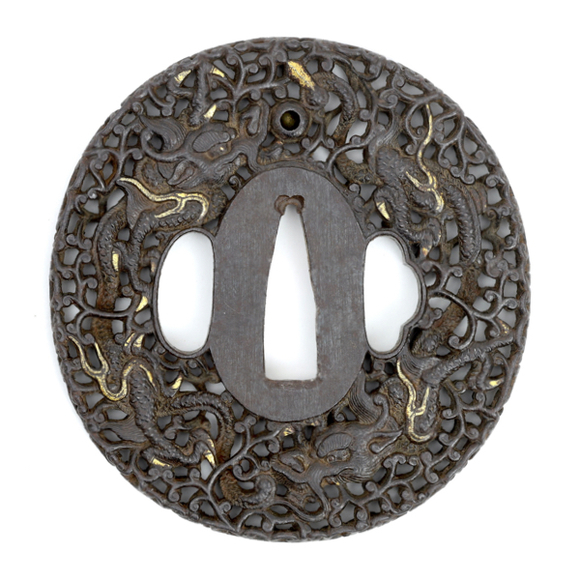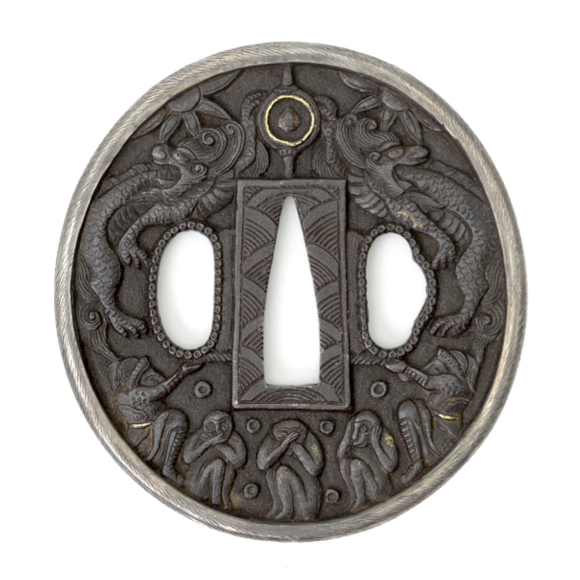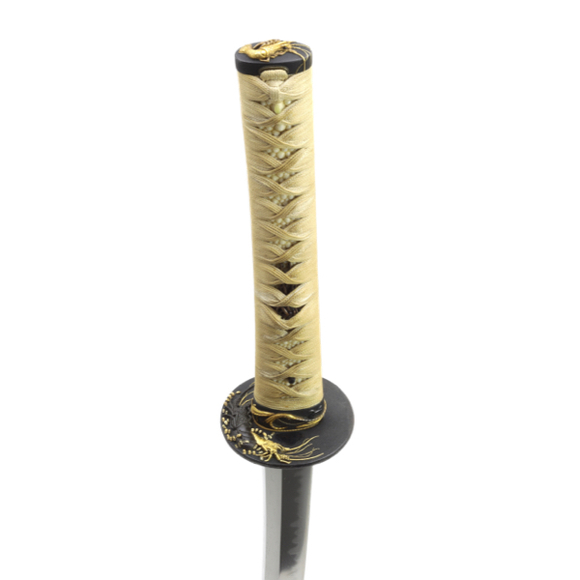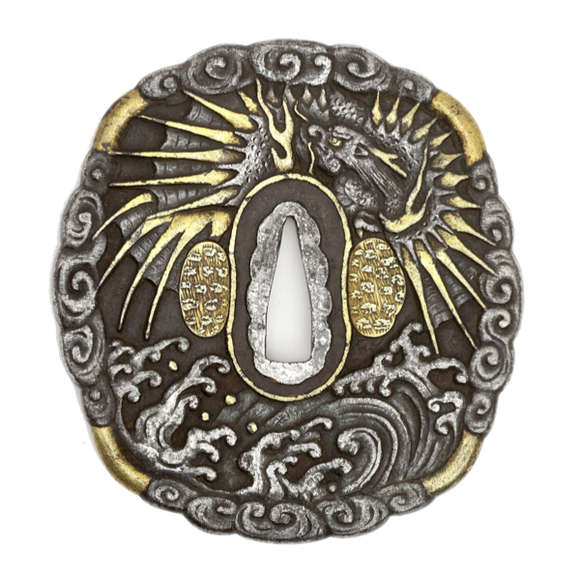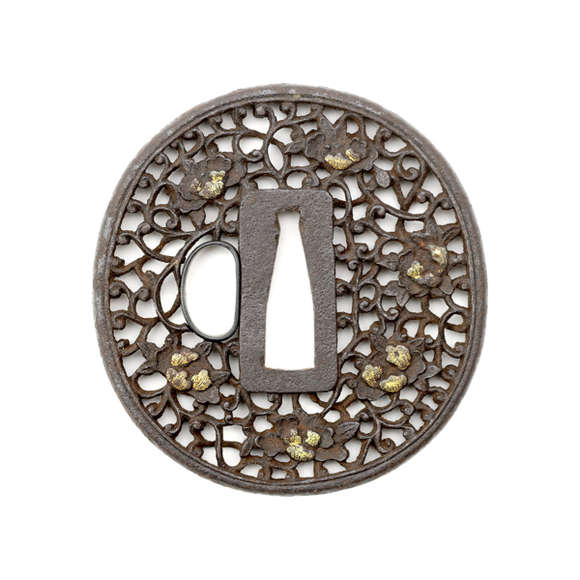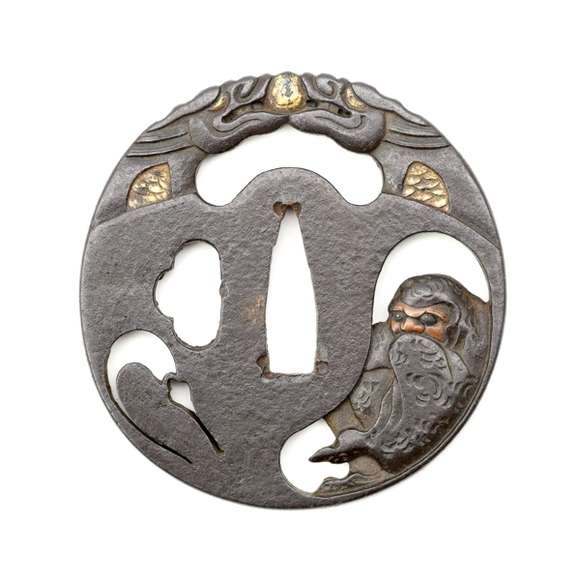The Yagami school were excellent carvers of iron, known for their 1000 monkey designs.
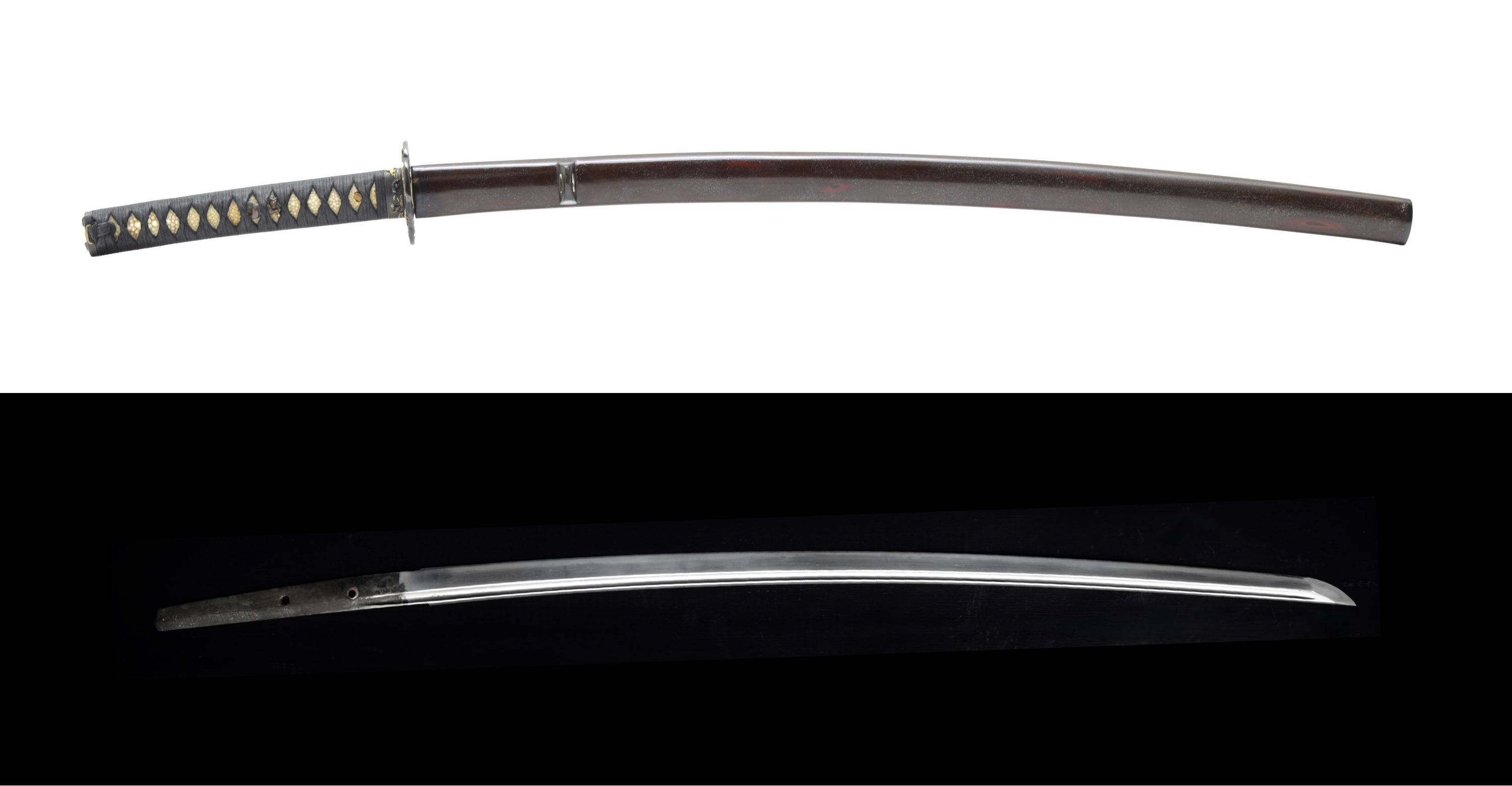
In koshirae 107.3 cm
Sword with hilt 94.6 cm
Blade unmounted 90.2 cm
Blade length 69.1 cm
1.8 cm
Base 7.7 mm
Tip 5 mm
Hamachi (base) 29 mm
Kissaki (tip) 18.5 mm
Blade 712 grams
With hilt 957 grams
14.5 cm from guard
Blade: Steel
Koshirae: Wood, shakudō, urushi lacquer, silk, stingray skin, buffalo horn, gold, silver, copper.
Japan
Blade circa 1670-1680
Koshirae 19th century
From a Dutch private collection
Description
A Japanese katana sword, complete with a full set of koshirae with a horse theme on all metal parts.
The blade has a moderate and even curve called toriizori, named after Shinto shrine archways of the same shape.
There is one wide groove on the left side, two grooves on the right side. It has a slightly elongated kissaki (point). The yokote line is faded.
The nakago (tang) is signed:
摂州住藤原広義
Sesshū-jū Fujiwara Hiroyoshi
"Resident of Sesshu [province], Fujiwara [honorary title] Hiroyoshi."
Active around the 1670s and 1680s, Hiroyoshi was a student of Sukehiro (助広) who was a master swordsmith known for making superior cutting swords (saijō-ō-wazamono).1 Hiroyishi himself was less well known, and his works were rated chū saku by Fujishiro, meaning "average work".2
The sword is currently not in a fine enough polish to judge the work, but the forging appears quite tight. Without flaws on the right side, some tiny ware on the left. The grooves are also rather well cut.
From what can be seen in its current state, the hada is itame (simple wood grain). The hamon is suguha-based (straight temperline) in nie deki (with large crystal particles) with quite some activity within the hamon, including sunagashi (effects reminiscent of brushed sand).
Notes
1. Markus Sesko; Swordsmiths of Japan. Lulu Publishing, 2014. Pages 1000-1001.
2. Ibid. Page 128.
Koshirae
The mountings consist of a full set of hilt mounts consisting of tsuba, fuchi, and kashira all in shakudō with horses in gold, silver, and several other colored alloys. It also has two horse-shaped menuki under the wrap.
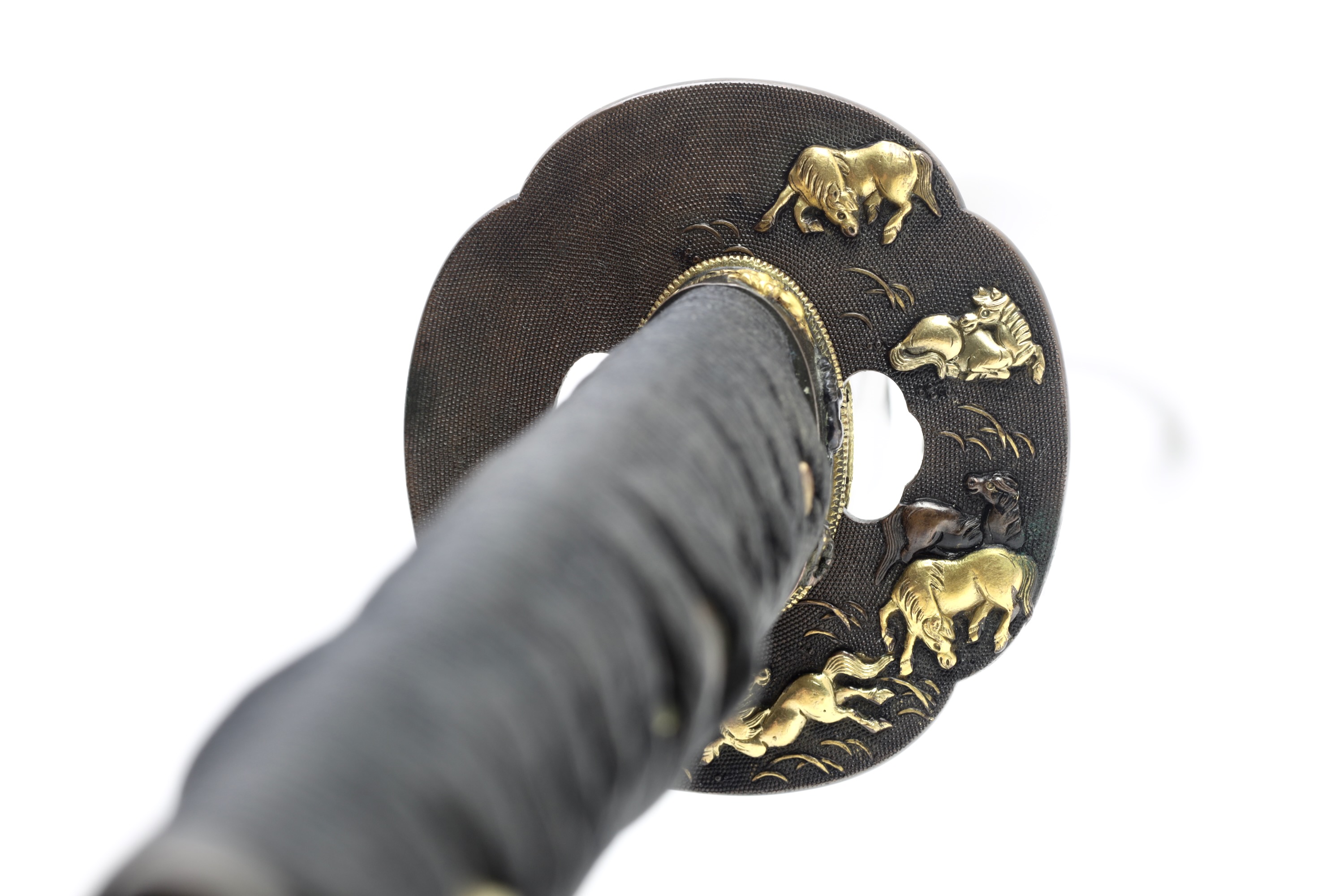
The saya (scabbard) is lacquered with dark red urushi over which a clear layer with mother of pearl particles, giving a sparkling appearance. The scabbard mouth, tip and loop are made of black buffalo horn.
Restorations/repairs & alterations
The nakago was altered in several ways. It was shortened, and the hamachi moved up the blade. It was also thinned somewhat, after which artificial patination was re-applied.
The scabbard has some areas where the underlying layers of the lacquer are seen, possibly where some surface damage was polished out.
The blade edge appears deliberately dulled at some point.
The blade could use a polish to bring back the details in the steel.

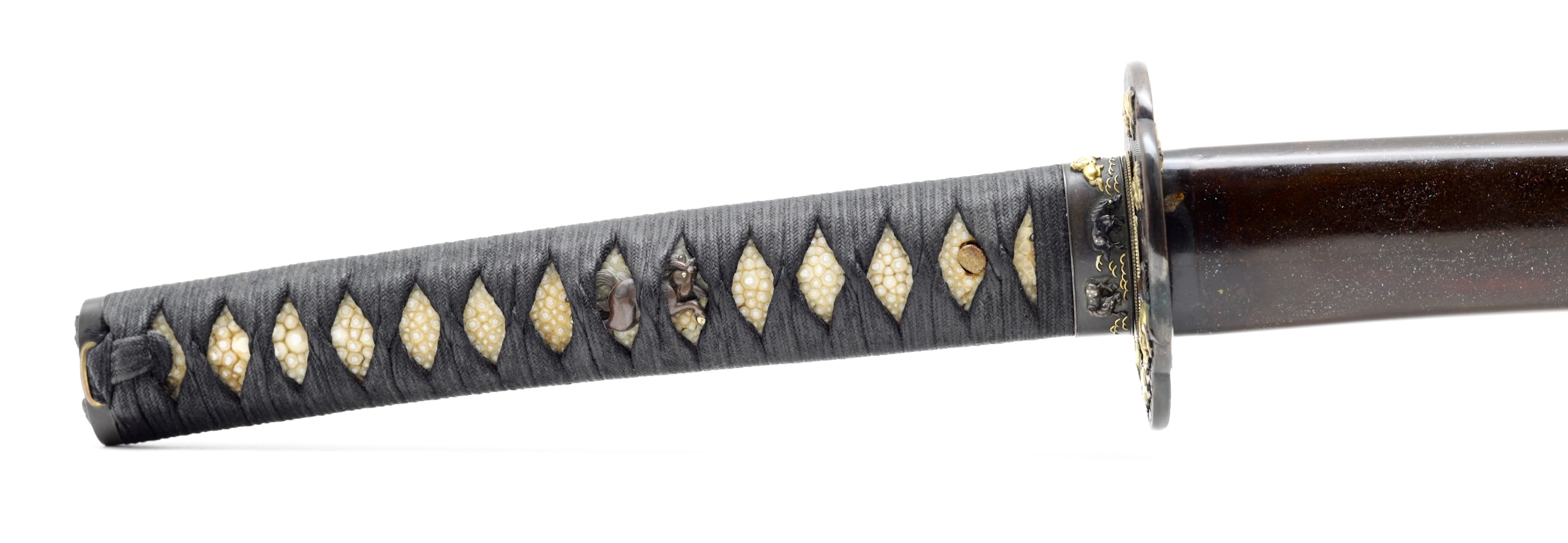


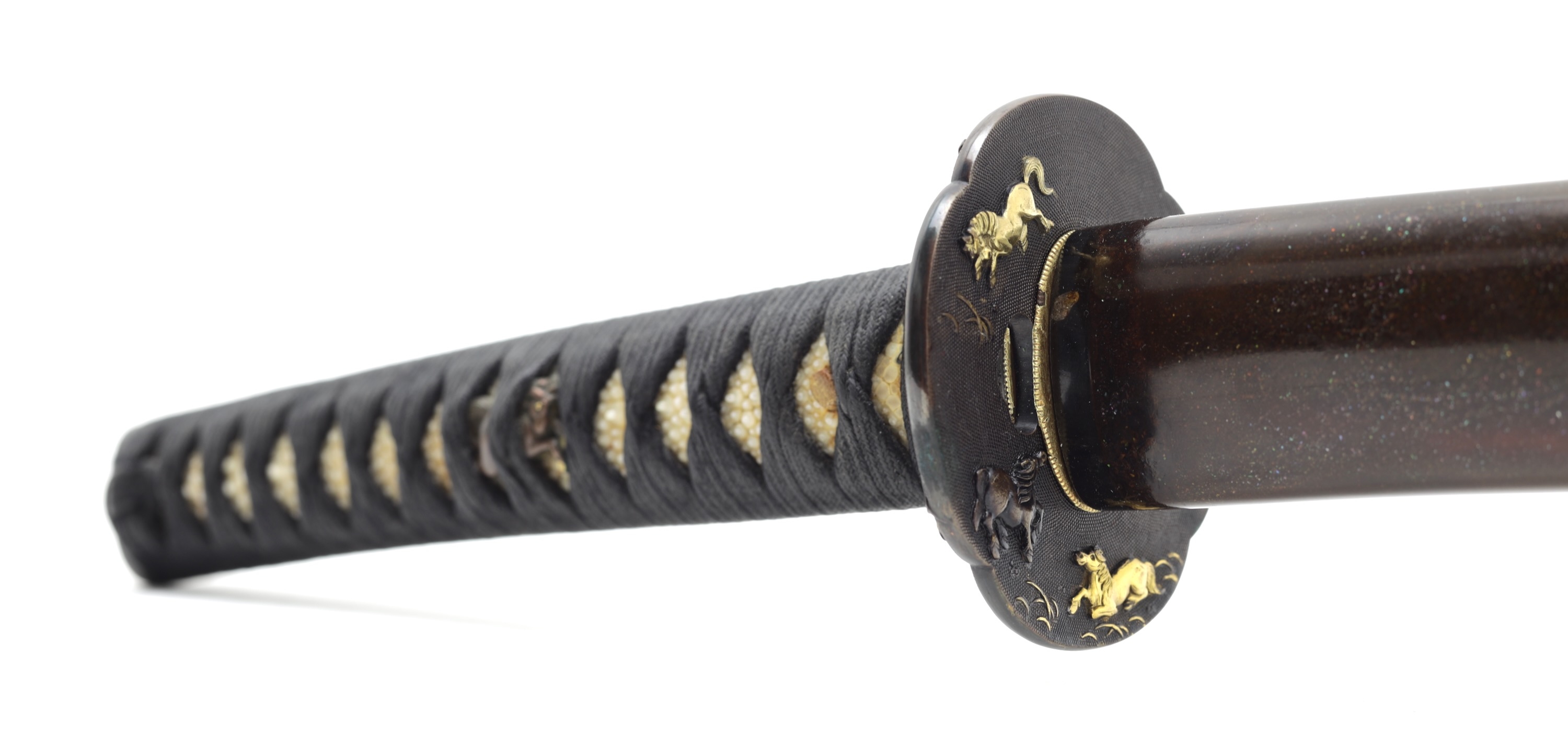
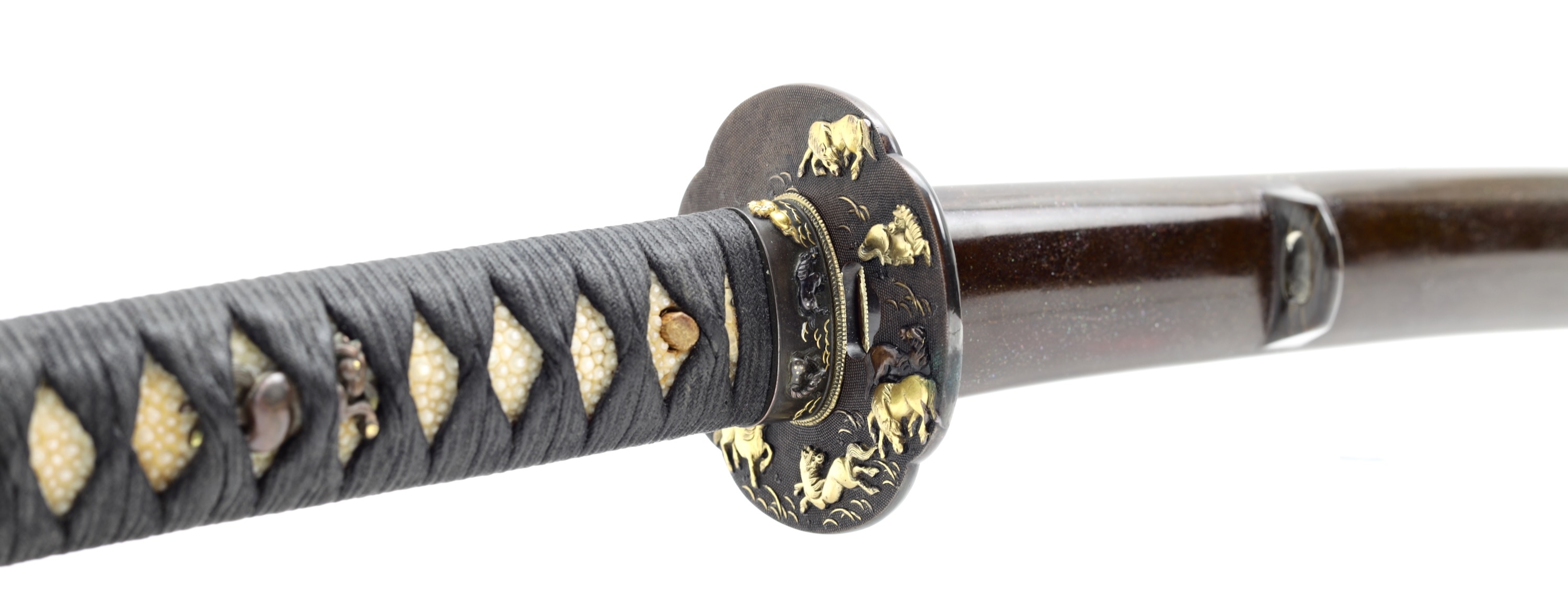
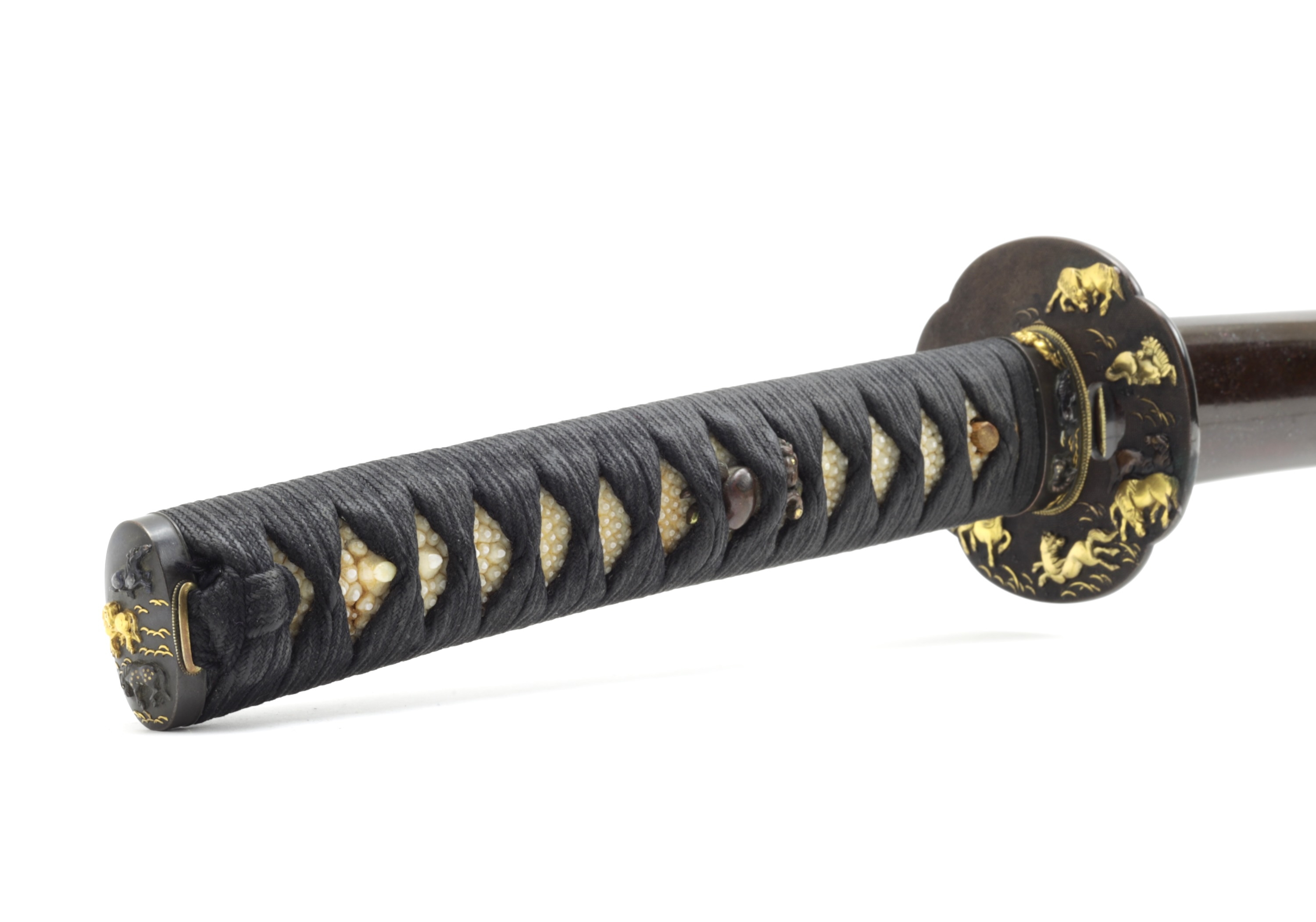
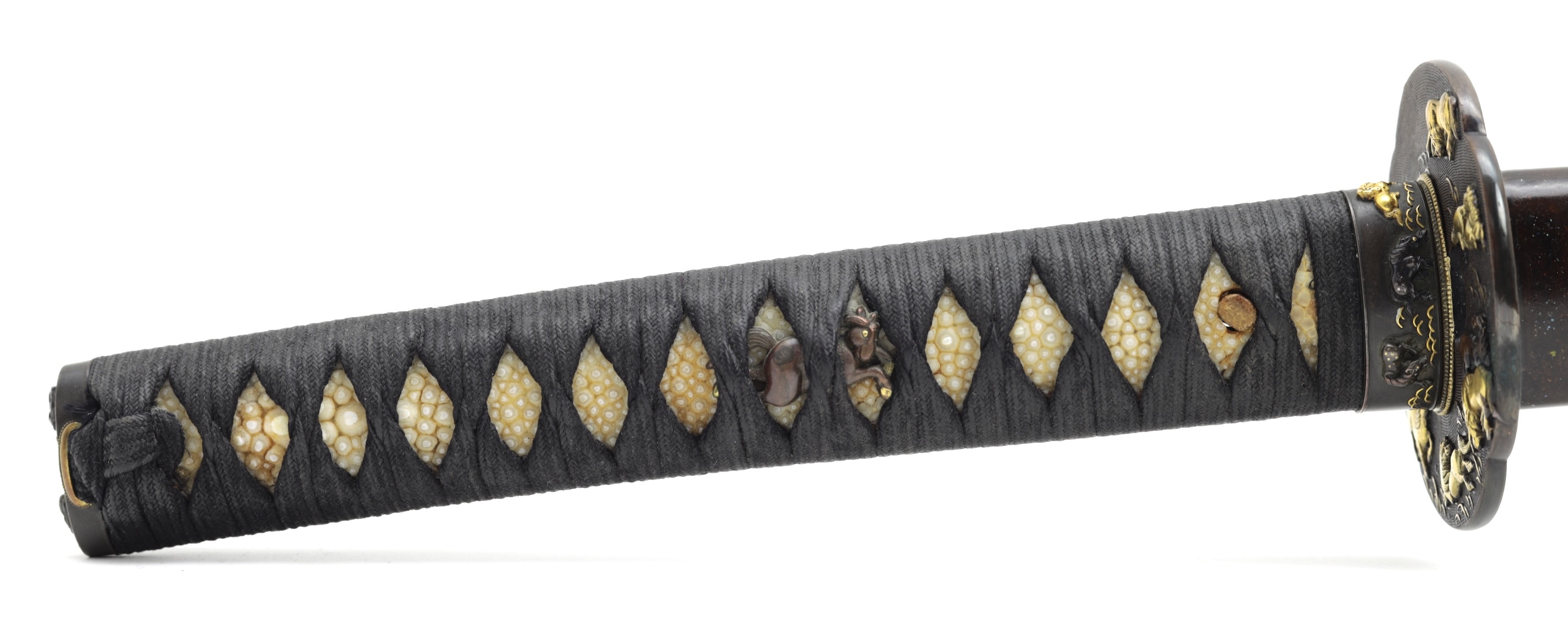

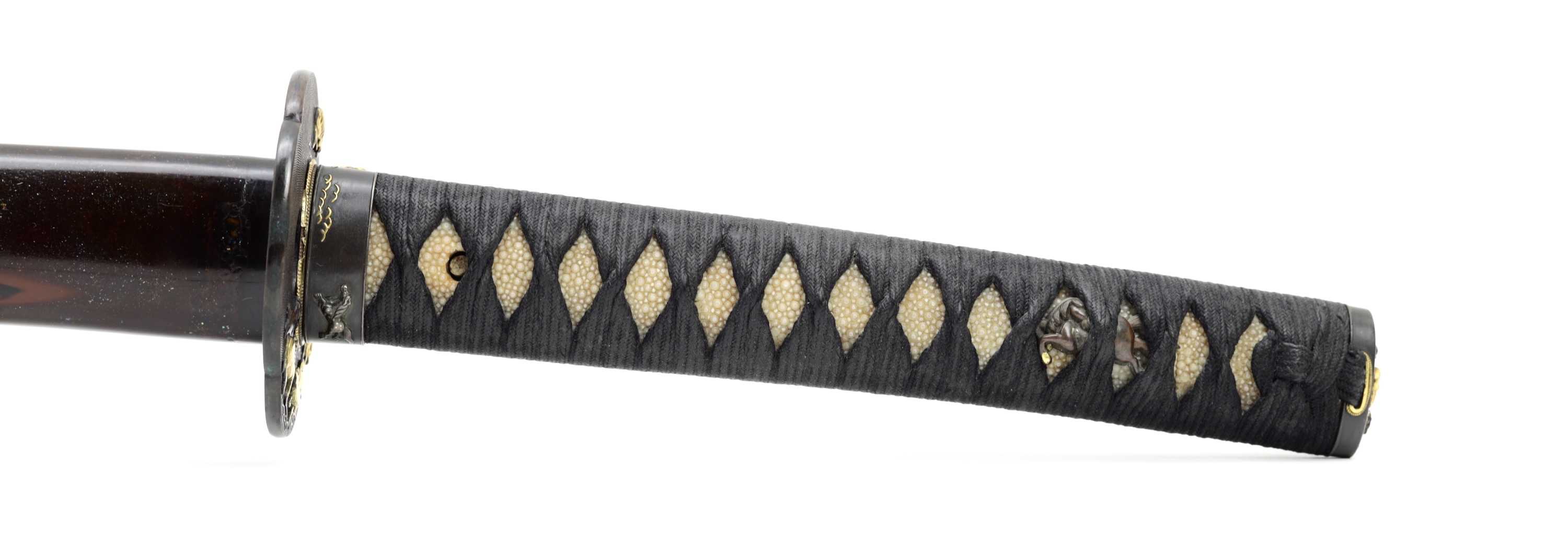


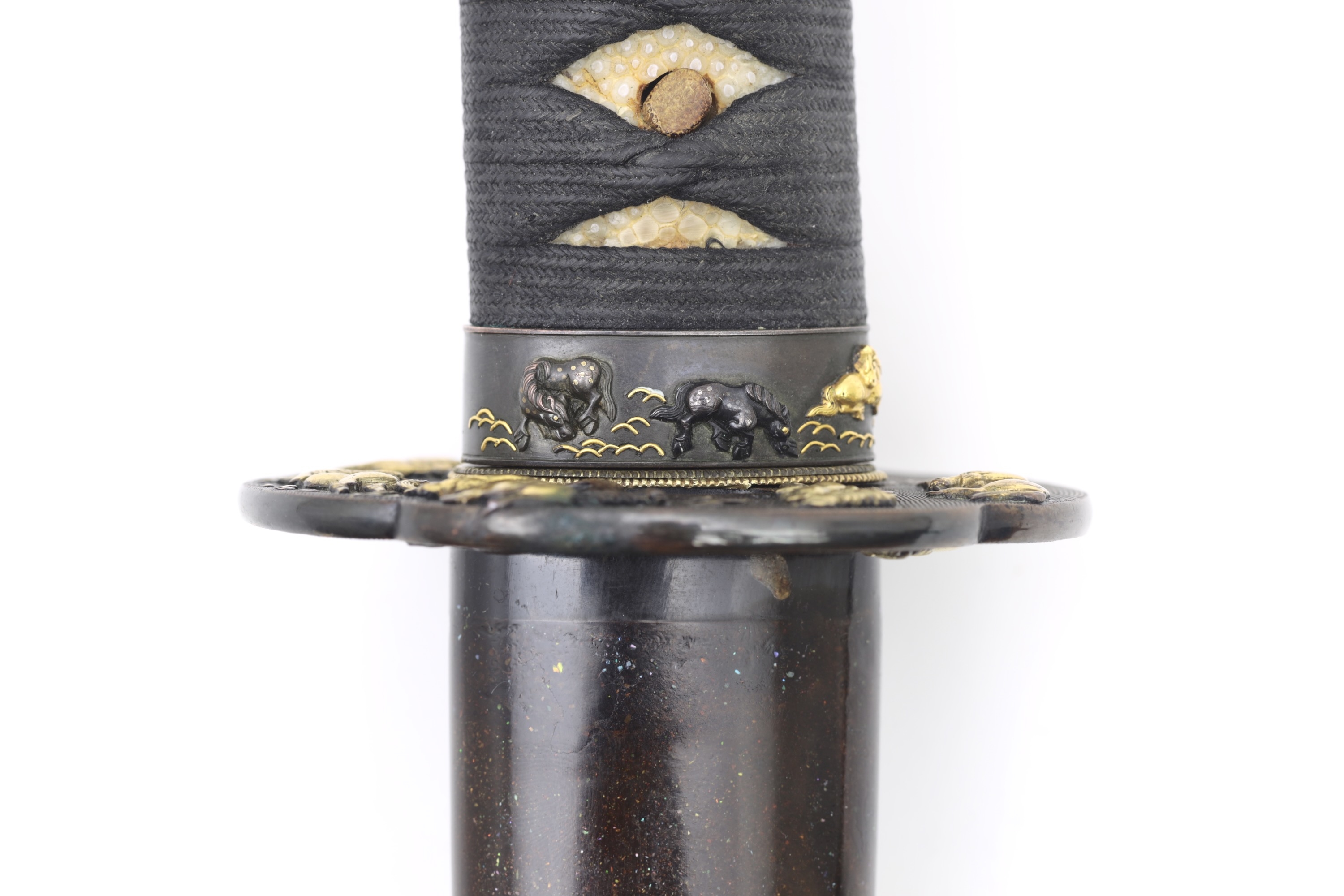
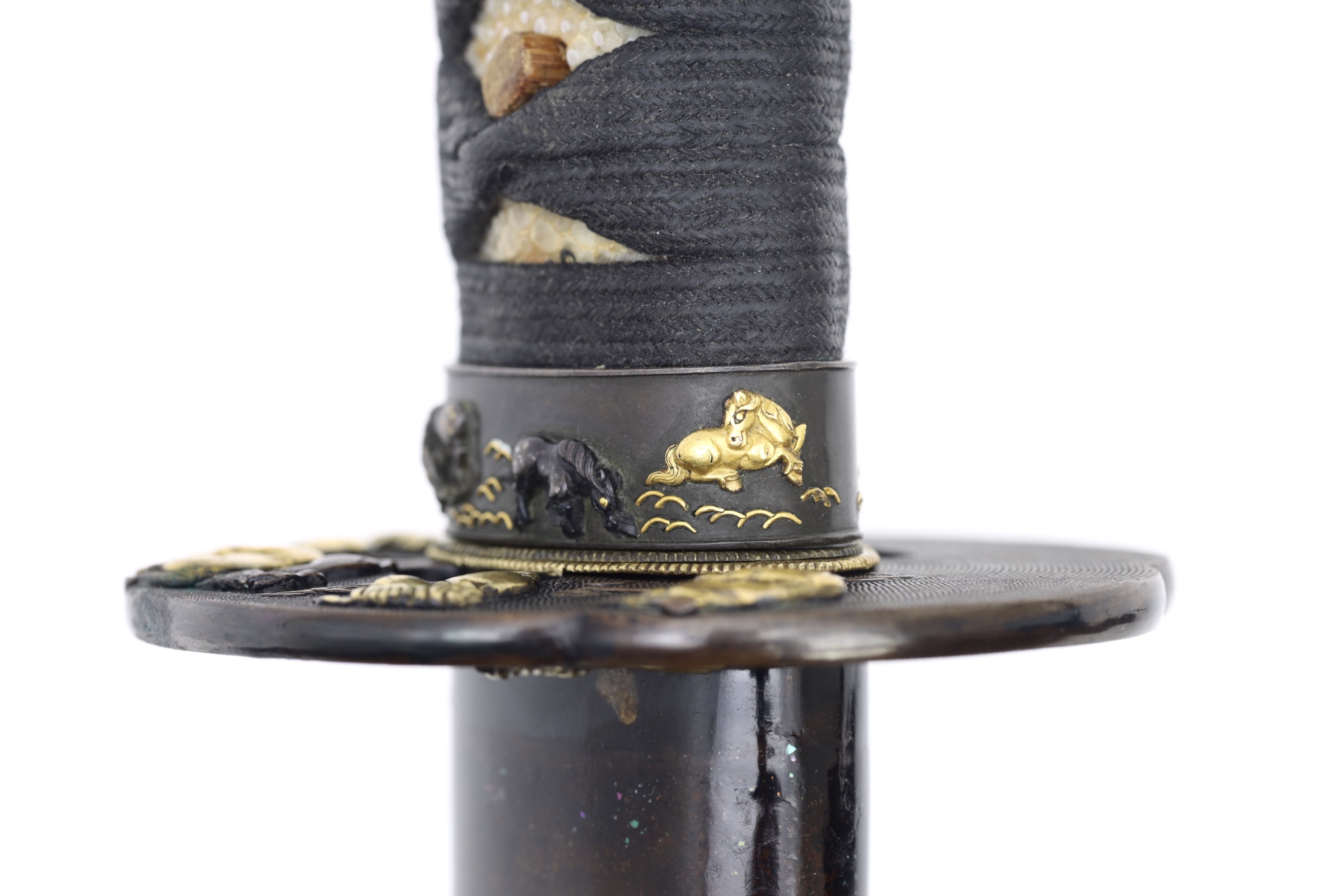
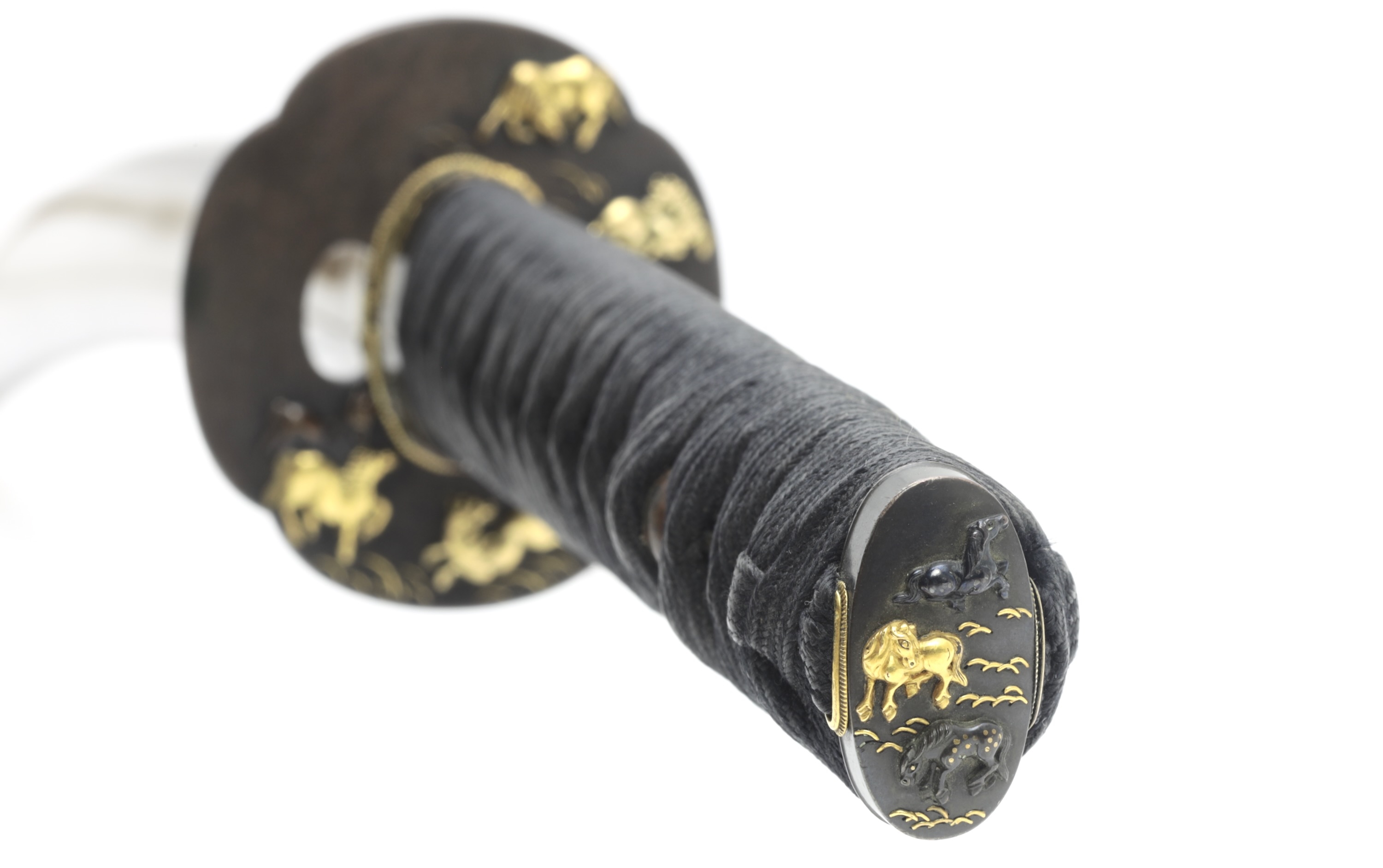
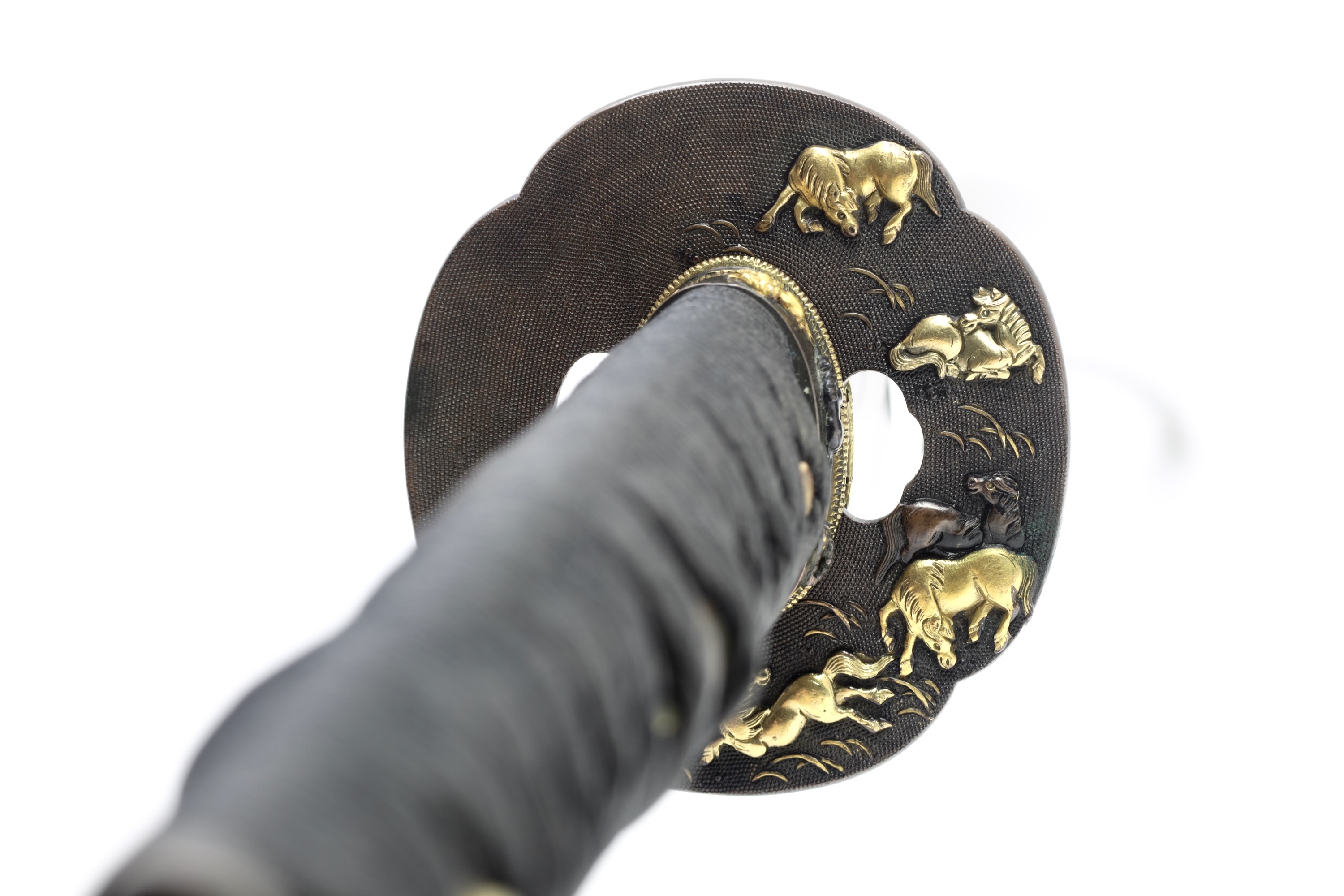









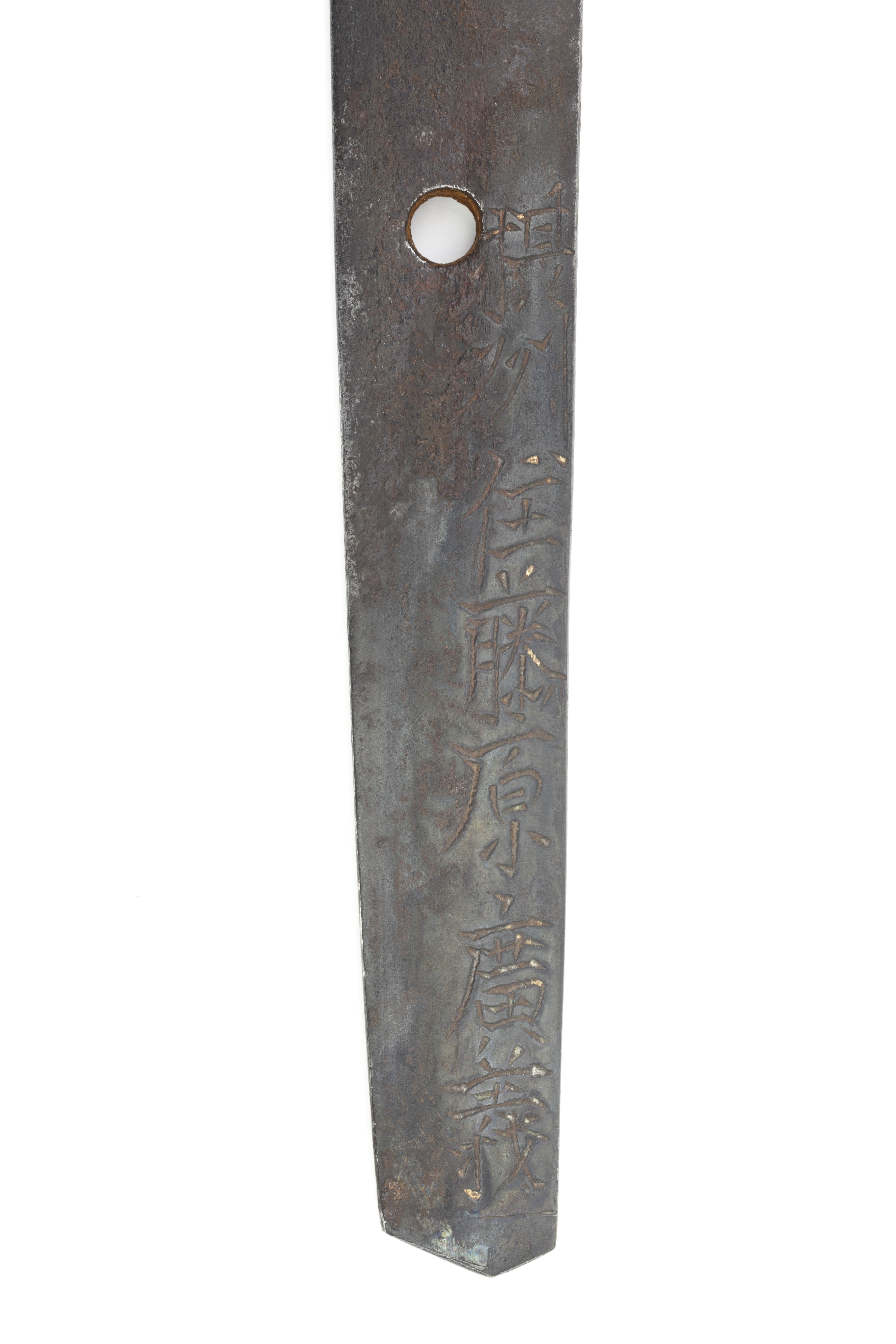

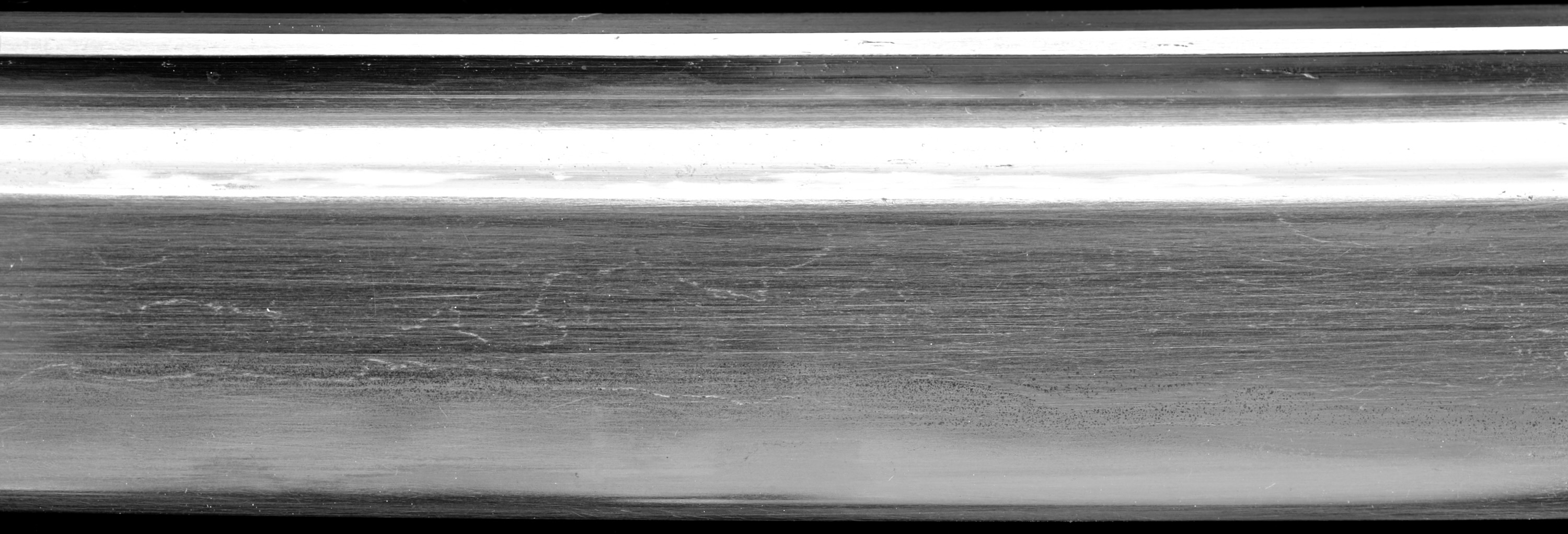



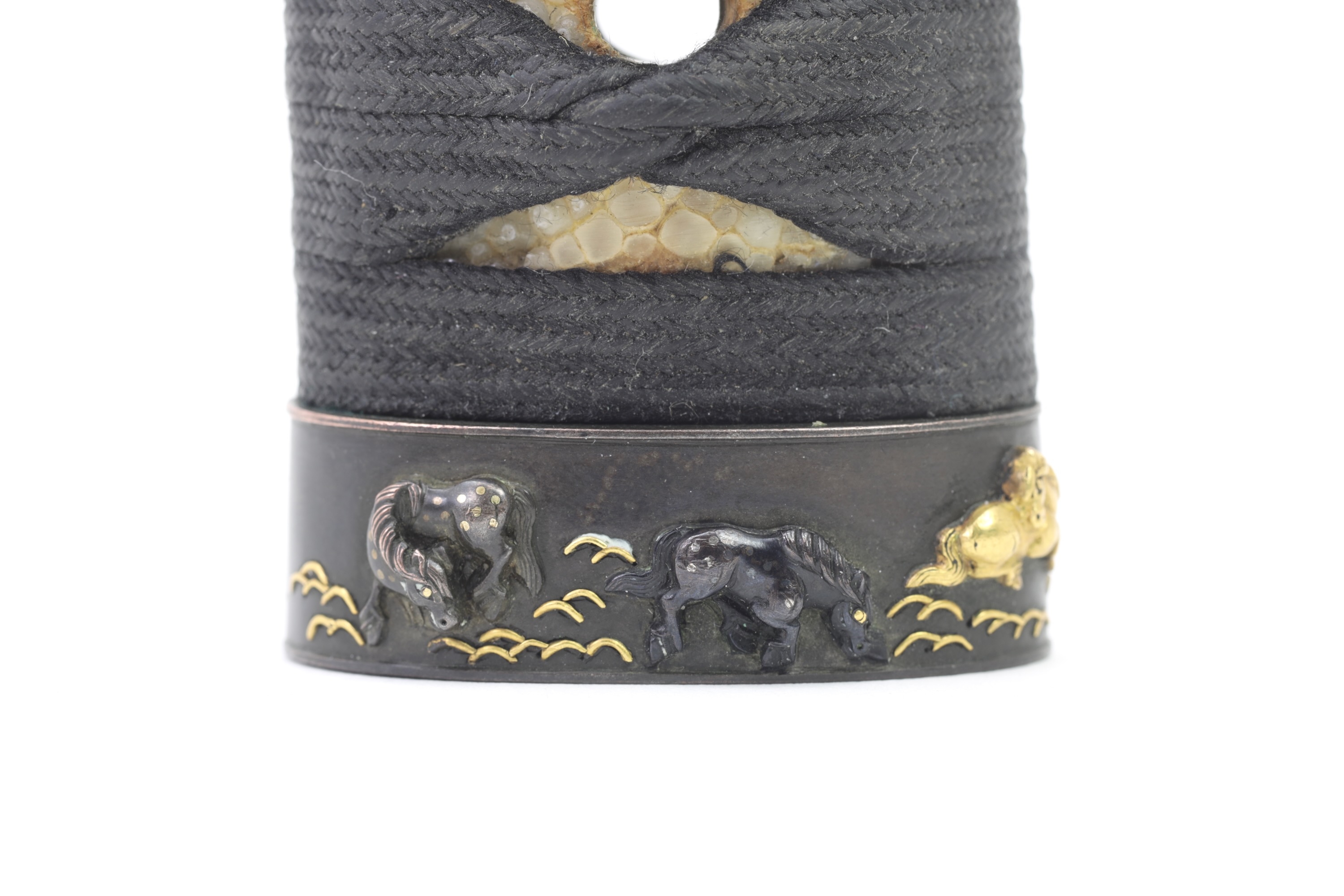
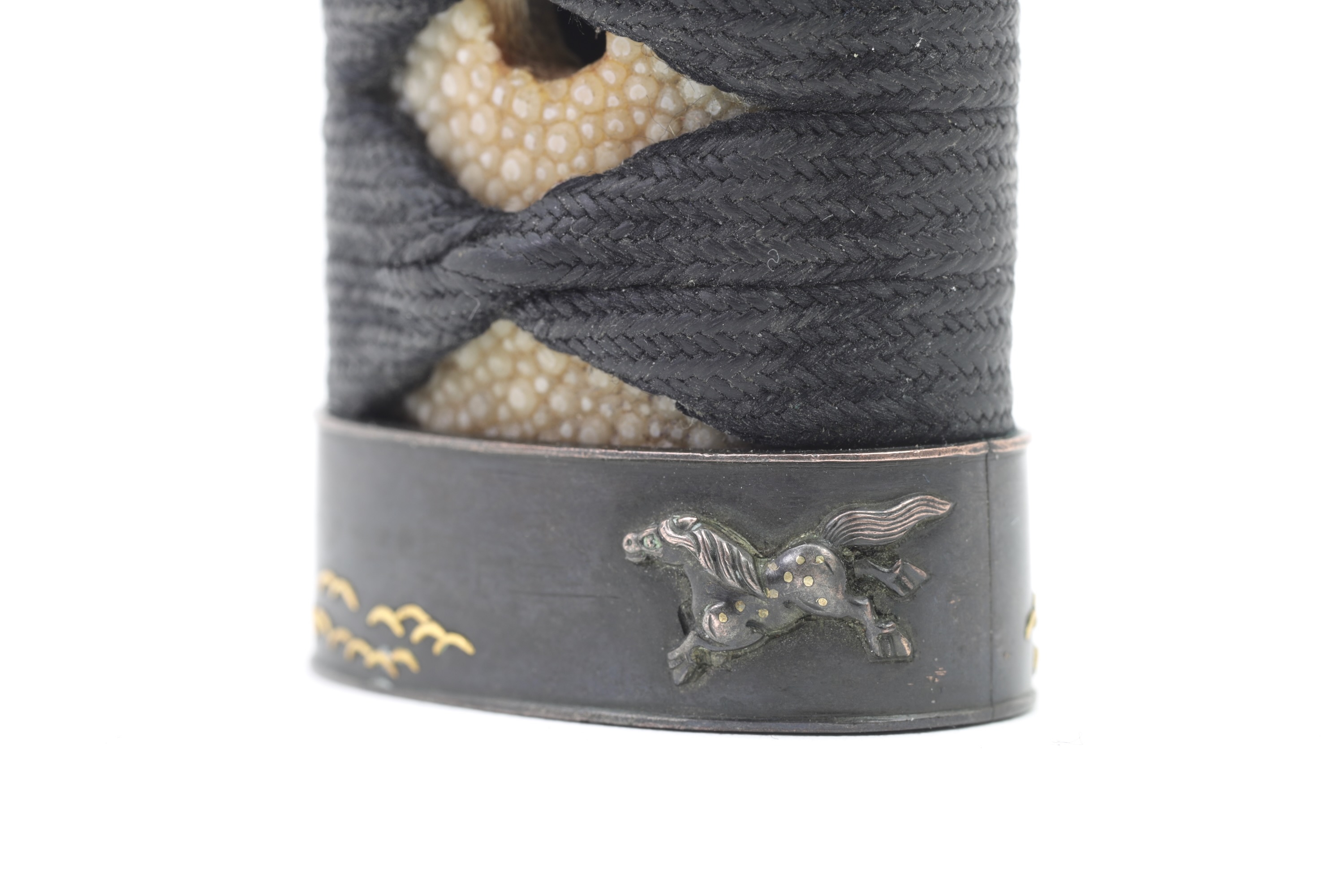
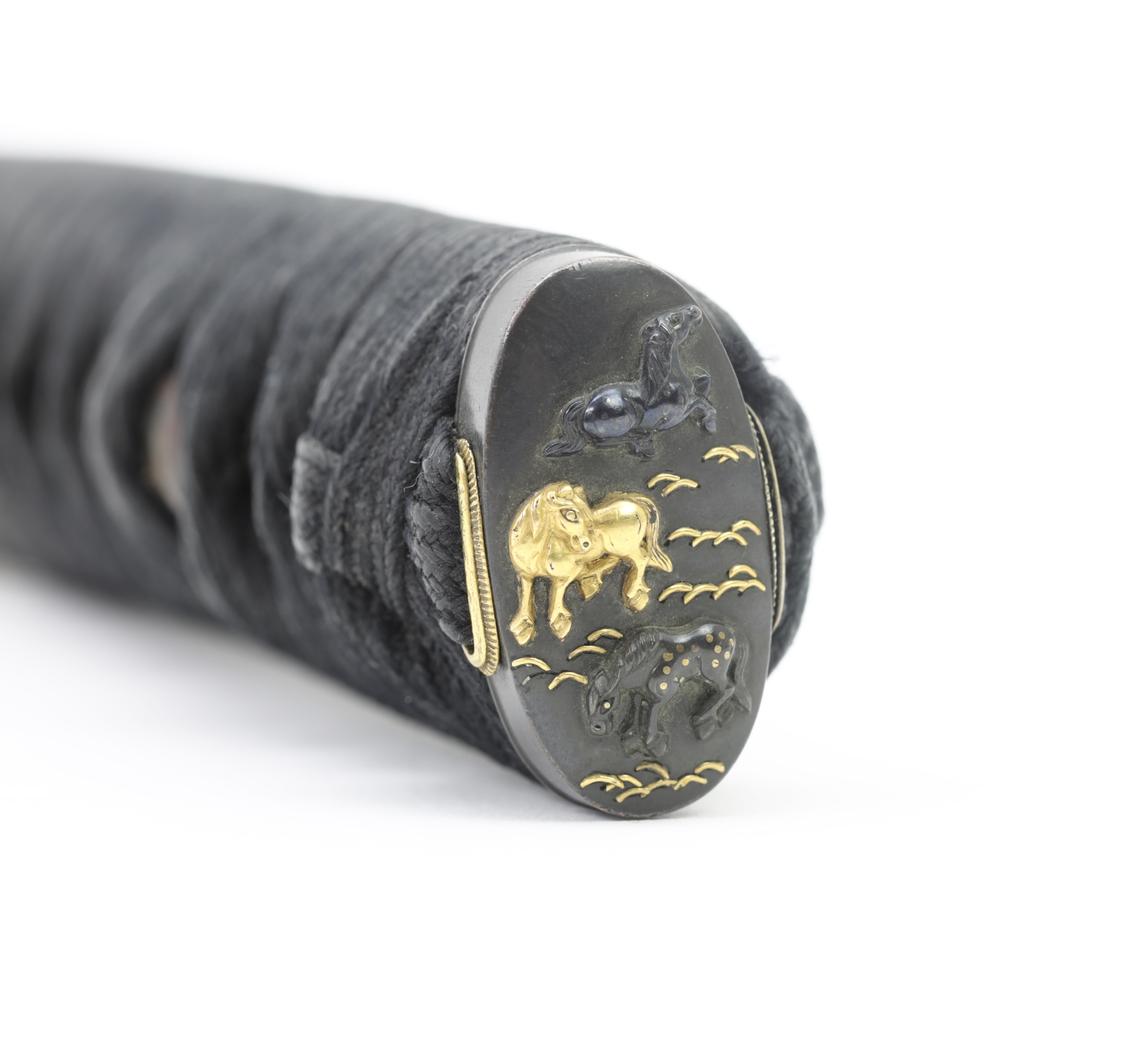
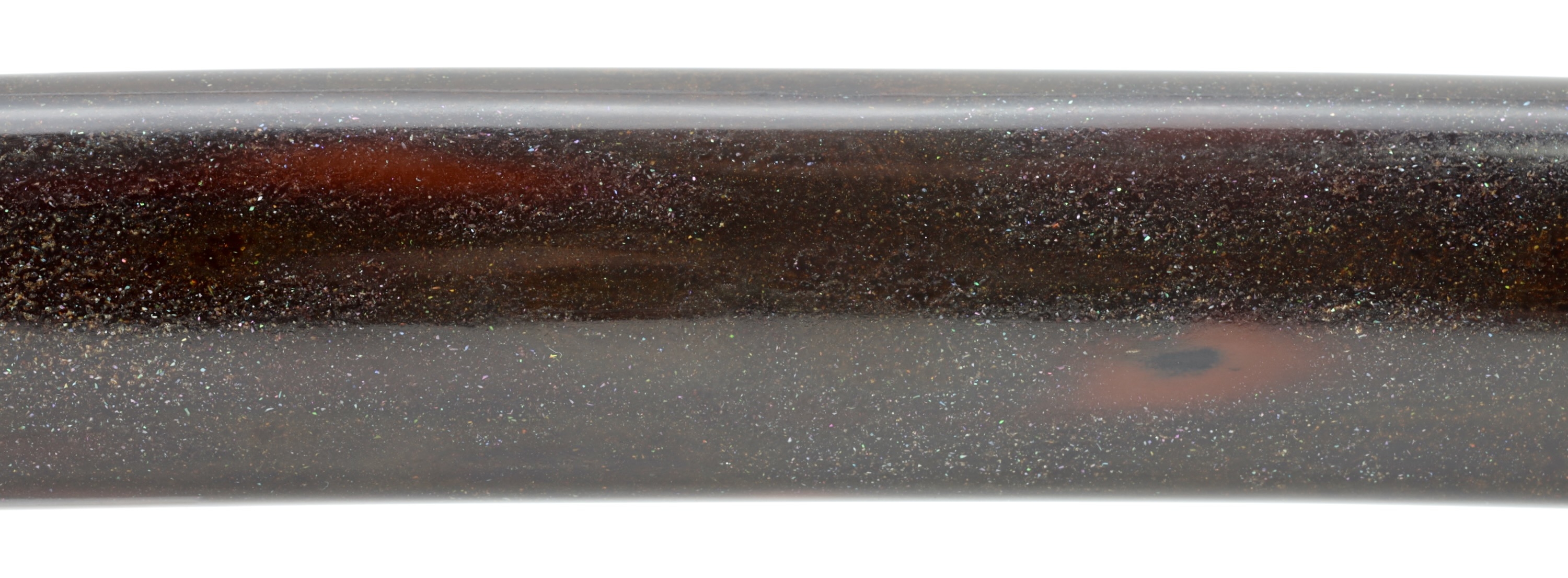
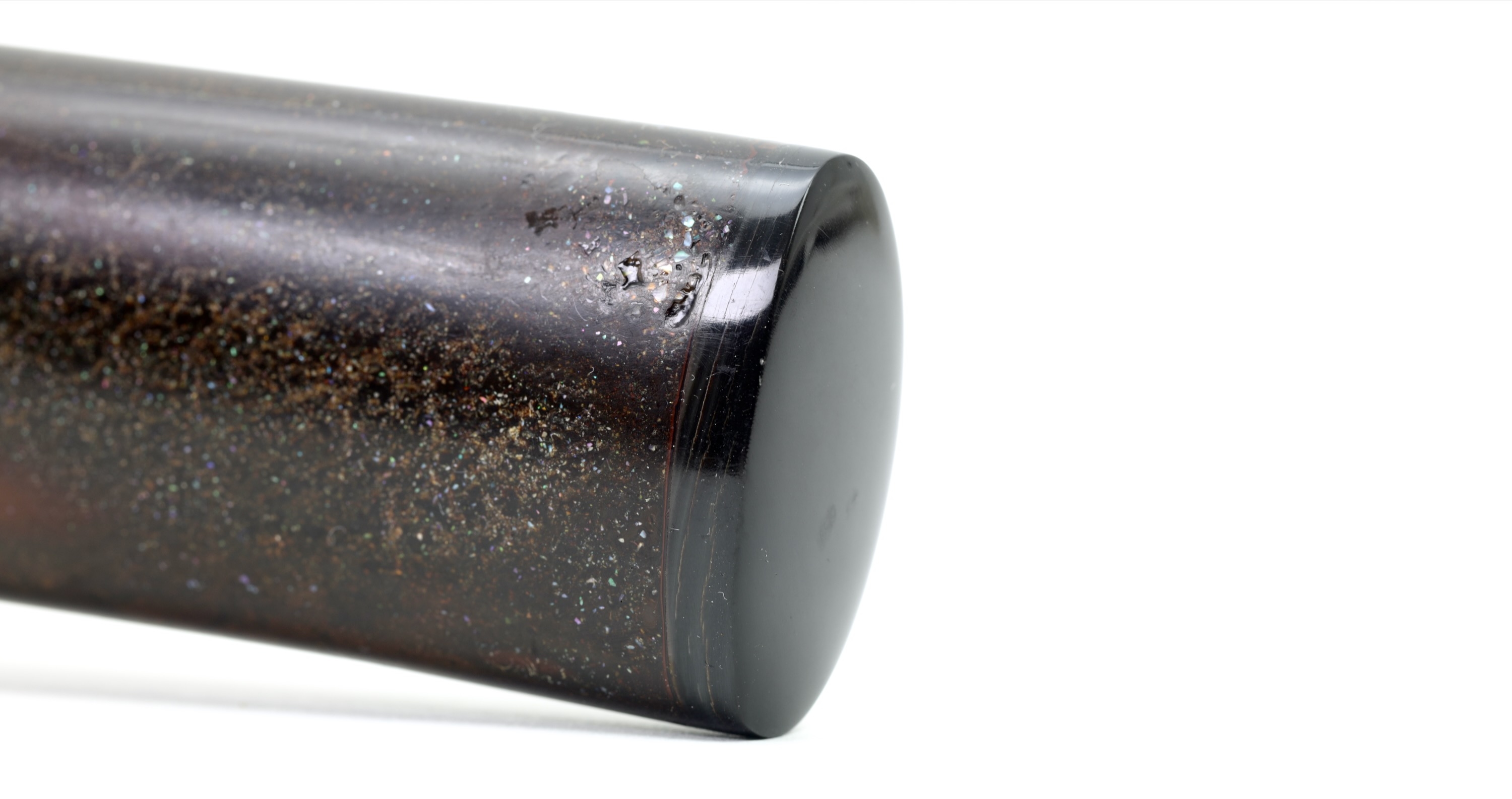
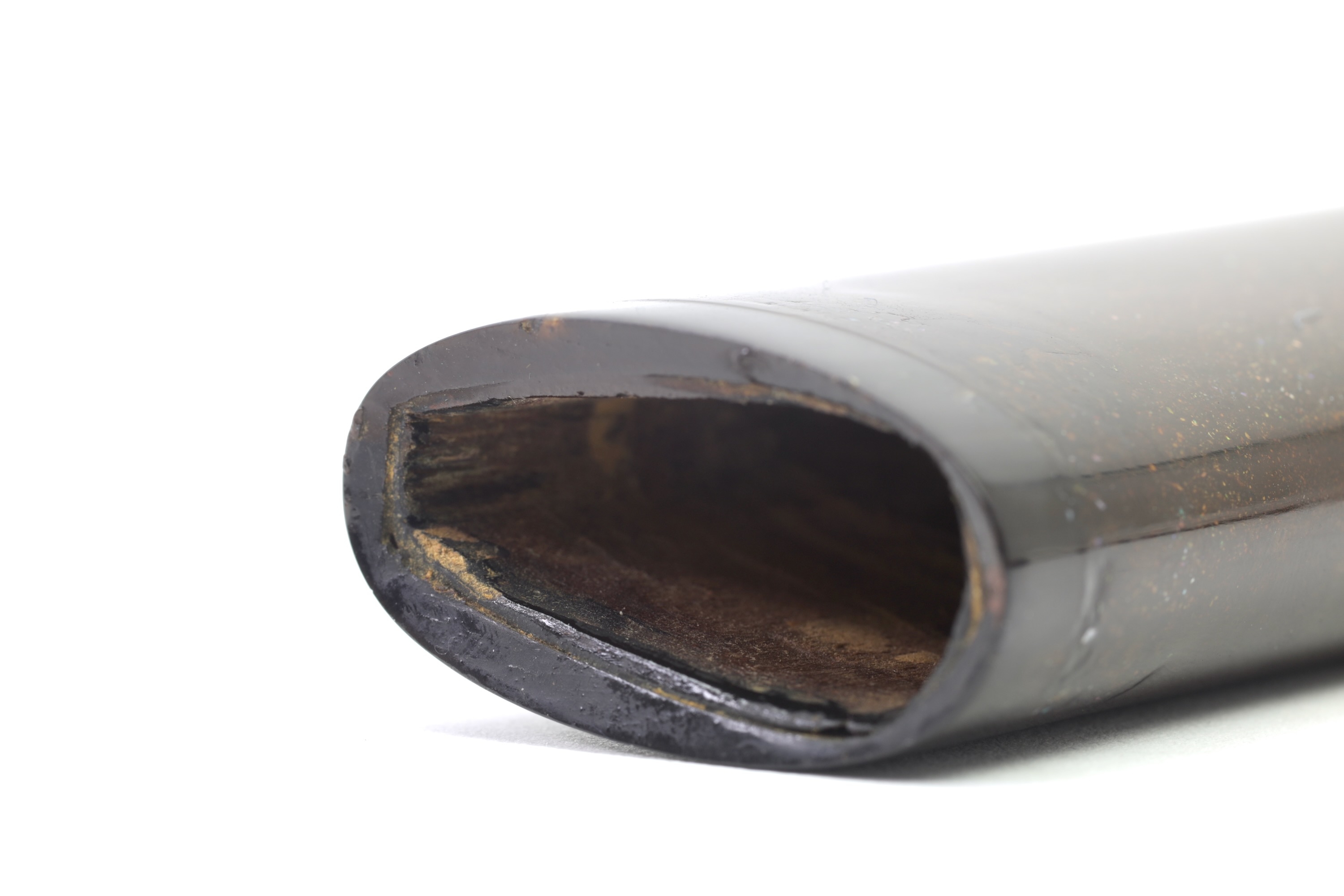
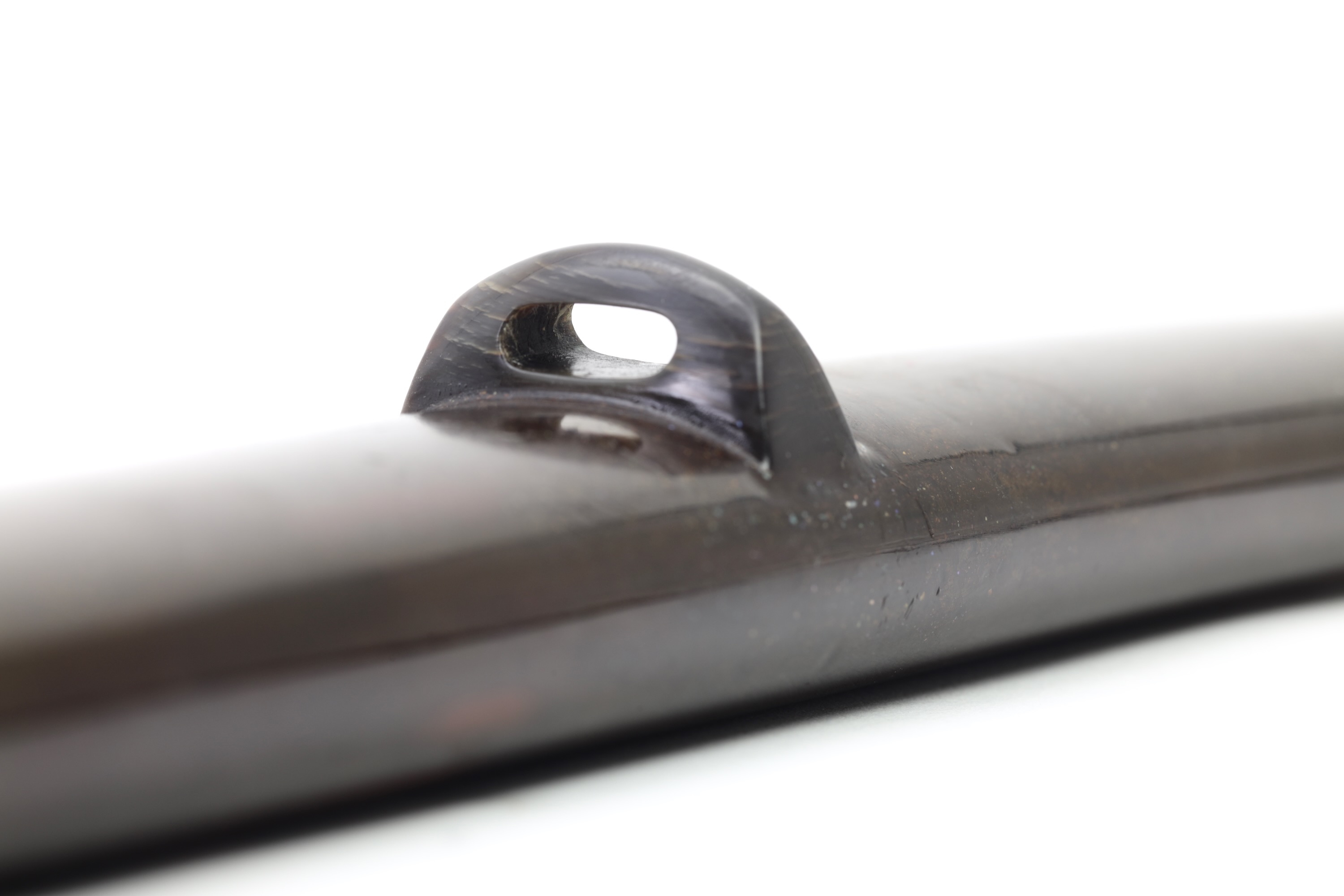
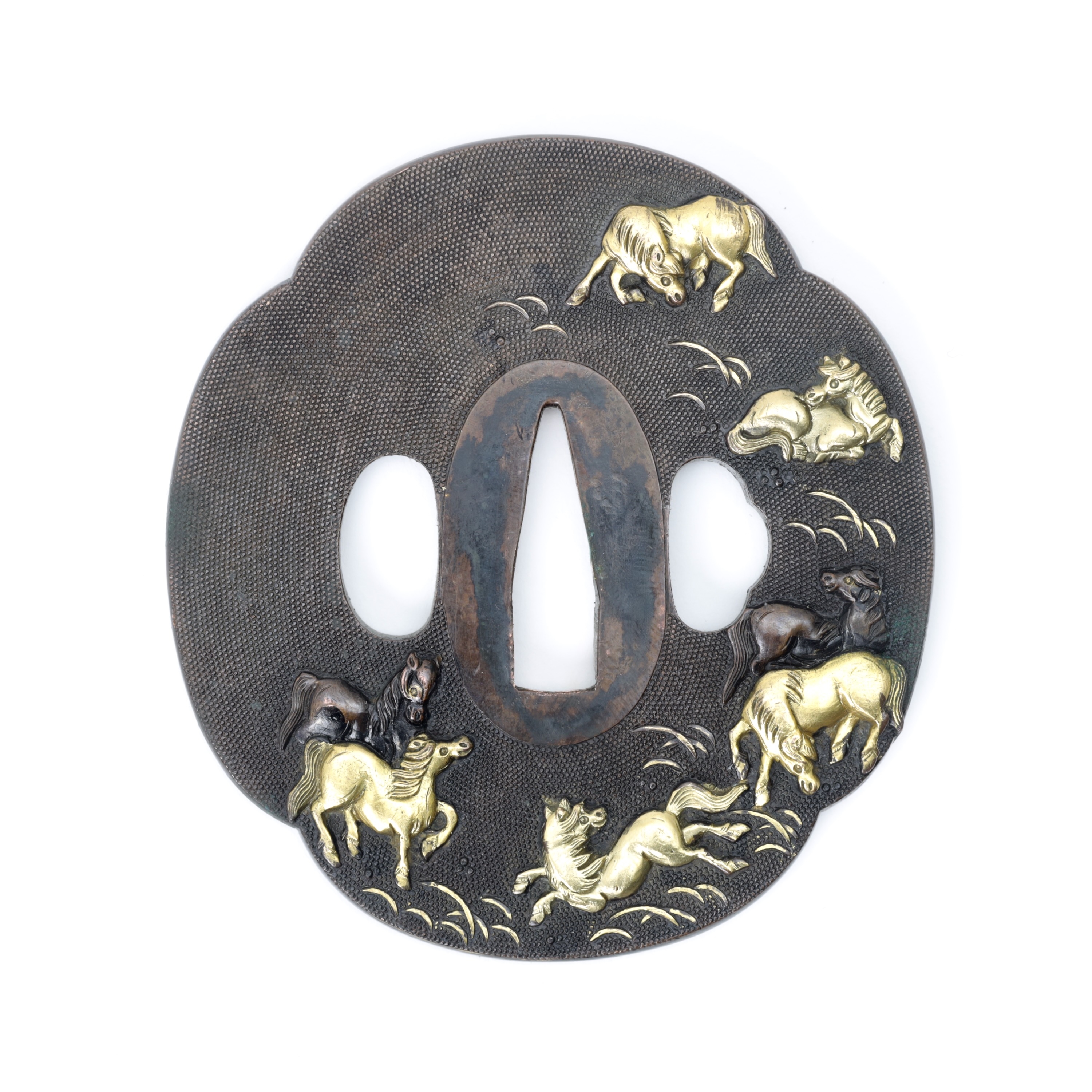
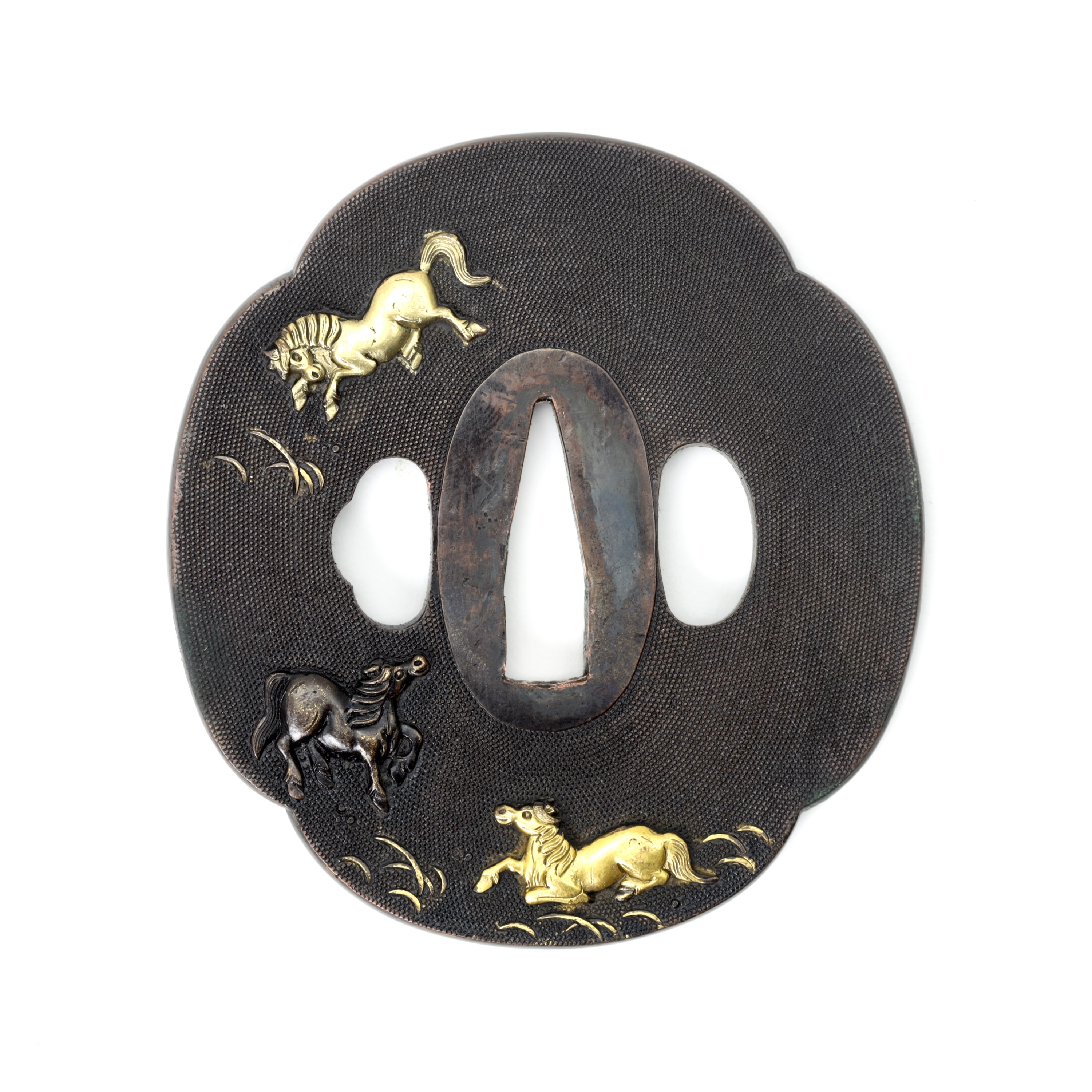
Japanese sword guard depicting three wise monkeys conveying the message see no evil, hear no evil, speak no…
The very detailed mountings are decorated with designs of Japanese spiny lobsters.
Executed in "nanban style" openwork with chiseled and gold-encrusted peonies.
A peculiar tsuba with a depiction of Bodhidharma and two dragon chasing a pearl.

